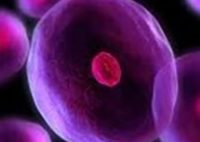This webcast features: Jamie Freeman, PhD, Product Manager, Horizon Discovery While great strides have been made in increasing the yield of biotherapeutic proteins, these have been achieved mainly through process improvement with a particular focus on media and feed strategies. Aside from single gene knockouts to allow for metabolic selection systems, the CHO host itself remains largely unchanged from that which was used thirty years ago. This webcast will cover how Horizon Discovery has used the recently released annotated sequence…
Author Archives: BPI Contributor
Vetter Wins 2018 ISPE Facility of the Year Award
Vetter has won the 2018 ISPE Facility of the Year Award (FOYA) in the Facility of the Future category for its Center for Visual Inspection and Logistics. The renowned prize is awarded annually by the prominent industry association, the International Society for Pharmaceutical Engineering (ISPE), to companies that have shown outstanding foresight, care and innovative creativity in the design and implementation of their facilities. The FOYA judges panel for ISPE was impressed by the intelligent combination of location design, state-of-the-art…
Top 10 Human Tissue Supplier Considerations for Allogeneic Cell Therapy Development
The rapidly developing global cell therapy market poses numerous industry challenges for drug development, process scalability, commercialization, and patient safety. The processes of procuring human tissue for clinical applications are fraught with many technical, ethical, and legal issues. Allogeneic cell therapies involving primary cell types such as bone marrow mesenchymal stromal/stem cells (BM-MSCs), hematopoietic stem and progenitor cells (HSPCs), and T and NK cells for immunotherapy applications are especially challenging due to the vigorous process of screening and qualifying human…
Assuring Multipotency of human Mesenchymal Stem Cells (hMSC)
Over the past decade, stem cell research has provided new avenues for deeper investigation into tissue repair and aging processes, as well as regenerative medicine methods. One of the major players in such research endeavors are mesenchymal stem cells (MSC), also known as mesenchymal stromal cells. MSC are typically found in bone marrow, adipose, placental, and umbilical cord tissues1 and are a type of adult stem cell. In vivo, these cells are headquartered in special microenvironments or “niches” in the…
Cell & Gene Therapies: A Guide to Single-Use Connections. 10 Transferable Lessons from the Bioprocessing Industry
It’s time to tackle the challenges of sustainable and cost-effective commercial manufacturing regarding cell and gene therapy. Cell and gene therapies have many of the same manufacturing needs as biopharmaceuticals. As a result, industry experts expect single-use technologies used in biopharmaceutical clinical trials and commercial production to play a larger role in the future development and production of cell and gene therapy. Single-use systems are already incorporated in the development of cell and gene therapies today. However, many of those…
Sartorius Stedim Biotech Launches New ambr® 250 High Throughput Bioreactor System for Perfusion Culture
Sartorius Stedim Biotech (SSB) announced the launch of the ambr® 250 high throughput (ht) perfusion bioreactor. This is a new automated parallel bioreactor system specially designed for rapid cell culture perfusion process development to optimize production of therapeutic antibodies. The ambr 250ht perfusion system has been developed in collaboration with major biopharma companies. It combines 12 or 24 single-use perfusion mini bioreactors (100-250 mL working volume) with associated single-use perfusion components, all controlled by one automated workstation. The combination of…
Integration of Cell Line, Process and Analytical Technologies to Speed Development and Clinical Supply of Emerging Therapy Products
This webcast features: Stewart McNaull, senior vice president of Business Development, KBI Biopharma, Inc. With biopharma’s ever-evolving pipeline of novel protein therapeutics, such as bi-specific antibodies, multimeric proteins, Fc-fusion proteins, and advanced monoclonal antibodies, CHO cells are being pushed to their productivity limits in drug development and manufacturing. Biopharmaceutical companies working on these promising new therapies increasingly struggle with development challenges such as weak protein expression, low-yield purification steps, and poorly optimized analytical techniques. As innovators address these challenges, robust…
Scale-Out Biomanufacturing – A Paradigm Change to Scale-Up
In biomanufacturing, a production scale change is required to either meet the market growth demand or when a product moves from clinical to commercial manufacturing. How that volume is increased depends on whether a scale up or scale out philosophy is used. The industry standard has been to scale up, which translates to increasing the size of the bioreactors used in manufacturing runs. However, due to the recent availability and ease of single-use technologies, coupled with improvements in cell culture…
Important Considerations in Successful Viral Clearance Studies
This webinar features: Esha Vyas, Field Applications Manager, Asahi Kasei Bioprocess America Virus filtration is a critical unit operation in the manufacture of biotherapeutic products. Rigorous and careful validation of this process-dependent step is necessary to demonstrate that the selected virus filter meets regulatory requirements. Thoughtful design and implementation of spiking studies are imperative to successful validation, and these studies may include consideration of various robustness and process parameters. Overall, the study design should be conducted as a representative scaled-down…
eBook: Addressing High Demands for Increased Productivity in Downstream Operations
Protein A has made monoclonal antibodies (MAbs) highly manufacturable and easier to develop in laboratories. Its use has enabled purification platform approaches, which have been key elements in growth of the MAb market. But in general, protein A columns are too large, which means they either limit the use of prepacked technology, or create a mismatch between a protein A column and downstream operations. Protein A columns also are more prone to bioburden contamination than any other step in a…









